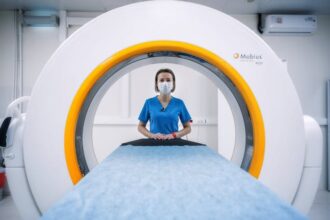Diabetes impacts over 10% of adults globally, accompanying a rise in vision-threatening diabetic retinal disease (DRD). Alarmingly, DRD is the primary cause of preventable blindness among individuals aged 20 to 74 years. Research indicates that screening for DRD is challenging due to the lack of symptoms in its early stages, leading to a general underestimation of the necessity for routine screenings.
Thomas Gardner, M.D., M.S., a professor of ophthalmology and visual sciences and an affiliate of the Caswell Diabetes Institute, discusses the current screening guidelines and therapeutic approaches for DRD in a notable article published in Diabetes Technology & Therapeutics. Diabetes affects various bodily systems, including the kidneys, nerves, and eyes. It impacts the retinal blood vessels and nerve cells explicitly, causing haemorrhages, atypical blood vessel formation, and the deterioration of crucial nerve cells.
Gardner explains, “Often, individuals only begin to take preventative measures when their vision is at risk, at which point they may already be suffering from advanced-stage DRD.” Consequently, the American Diabetes Association advises that adults diagnosed with type 2 diabetes undergo their initial eye examination immediately upon diagnosis. In contrast, those with type 1 diabetes should do so within five years.
The screening protocols differ between type 1 and type 2 diabetes because individuals with the latter may experience vision complications before they even realise they have the condition. Gardner highlights that adolescents and young adults face a greater risk, primarily due to the challenges they encounter in managing their diabetes effectively.
Managing diabetes entails continuous monitoring of blood glucose levels and dietary adjustments. Gardner remarks, “Sometimes, even when patients maintain consistent medication dosages, dietary habits, and physical activity, they still experience fluctuating blood sugar levels, which complicates management efforts.” A significant challenge for patients is reducing their blood sugar levels without inducing hypoglycaemia, characterised by tremors, irregular heartbeats, sweating, and dizziness.
Although advancements in insulin pumps and continuous glucose monitors have simplified blood glucose control, Gardner stresses the importance of addressing other diabetes-related health issues. “It’s crucial for individuals with diabetes to undergo regular health examinations to ensure their blood pressure is stable and all organs are functioning properly. Achieving comprehensive control over all aspects of diabetes is vital,” he stated.
While the impact of diabetes on the retina remains partially understood, researchers have identified several promising pharmaceuticals. These include drugs that manage blood pressure and lipid levels, such as SGLT inhibitors, GLP-1 receptor activators, and fenofibrate, which have shown potential in slowing the progression of DRD. Gardner concludes, “The outlook for maintaining vision in diabetic patients is more promising than ever before. There is every reason to be hopeful that with regular screenings and appropriate treatments, vision loss can be averted.”
More information: Thomas Gardner et al, Current Treatment Options for Diabetic Retinal Disease, Diabetes Technology & Therapeutics. DOI: 10.1089/dia.2024.0548
Journal information: Diabetes Technology & Therapeutics Provided by Michigan Medicine – University of Michigan








